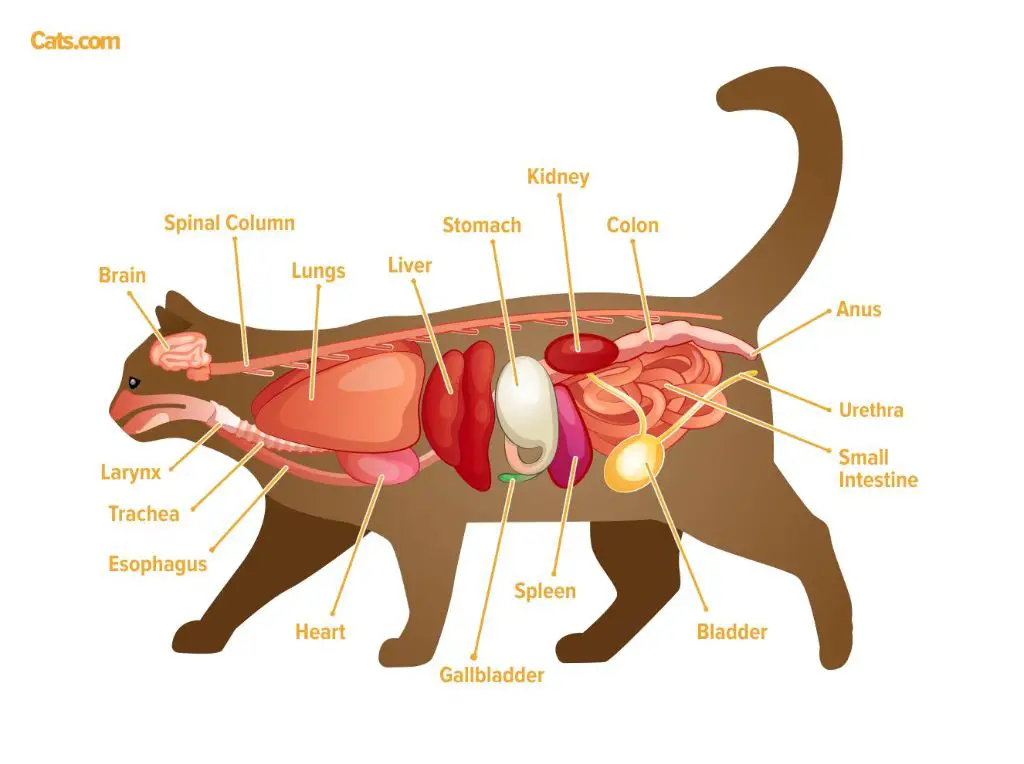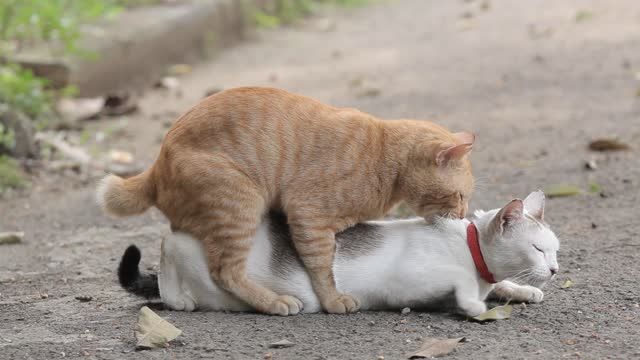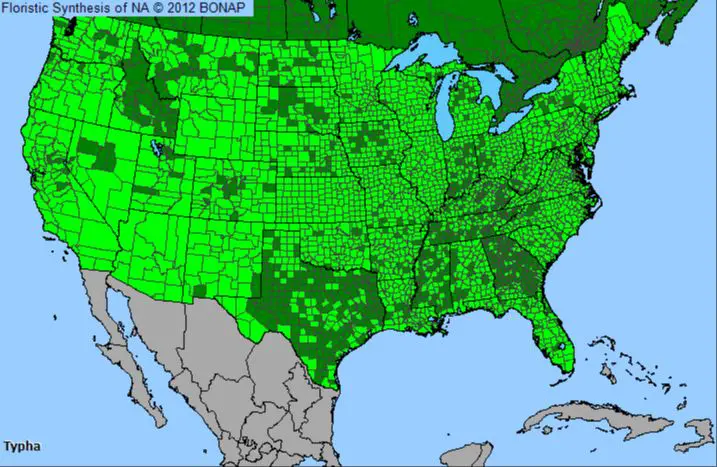What Are Cat Tails?
Cat tails, also known as Typha, are a genus of wetland flowering plants that grow in dense clusters in marshes and along the edges of ponds and rivers. They are characterized by long, upright stalks topped with cylindrical, brown, velvety flowering spikes that resemble a cat’s tail, giving them their common name.
Cat tails have long, flat, grass-like leaves that extend upward from a spreading rhizome or underground stem. The leaves are linear in shape, with parallel veins, and can grow 3-10 feet tall. The stalks grow separately from the leaves, reaching 6-12 feet in height. At the top of each stalk is the cat tail’s distinctive flowering spike, which is actually made up of many tiny individual flowers packed densely together. It has a velvety-soft, sausage-like appearance. The spike is brown in color and can grow 6-16 inches long and 1 inch in diameter.
There are several species of cat tails, but the most widespread ones are the common cat tail (Typha latifolia) and the narrowleaf cat tail (Typha angustifolia). Cat tails grow all over North America in any wet, marshy areas with standing water. They thrive along pond edges, river banks, ditches and other aquatic habitats. Their tall brown flowering spikes rising above the water make them one of the most recognizable wetland plants.
The Internal Structure of Cat Tails

Cat tails (genus Typha) have a distinct internal structure that allows them to thrive in wetland environments. The main structural components of a cat tail plant include:
Stems – Cat tail stems are upright, unbranched, and cylindrical. They contain spongy, air-filled tissue that provides buoyancy and support in aquatic habitats (source). The stems grow up to 10 feet tall.
Leaves – The leaves are long, blade-like, and emerge directly from the base of the plant and along the stem. The leaves contain parallel veins and stiff fiber bundles that provide structural support.
Flowers – The distinctive cylindrical cat tail flower spike contains hundreds of tiny individual flowers. The upper spike contains male flowers while the lower spike contains female flowers. They are densely packed together on the rachis, which has an internal fibrous core (source).
Roots – Cat tails have adventitious roots that grow out from the stem above ground level. The roots are spongy with large air spaces to allow oxygen transport when flooded. They anchor the plants in the water-logged soil.
Do Cat Tails Have Bones?
Plants like cat tails have a very different anatomical structure compared to animals. Animals have bones that provide structural support and protection for their bodies. Bones contain living tissue and are made up of minerals like calcium. In contrast, plants do not contain true bones.
Instead of bones, plants have cell walls made up of cellulose and lignin that provide strength and structure. Plants also contain vascular tissue like xylem and phloem that transport water, nutrients and sugars throughout the plant. Another key structural component of plants are turgor pressure and the rigidity provided by woody tissue in some plants. Unlike bones, the cell walls and vascular tissues of plants are still living.
Cat tails specifically have a stem and leaves made up of vascular plant tissue and cell walls. Their brown sausage-like flower/seed head contains a central spike with tiny flowers, surrounded by elongated stalks and fine hairs. While this provides structure, cat tails do not have anything resembling true bones. In essence, the key difference between plants and animals is that plants contain cell walls rather than bones. So in summary, cat tails do not have bones.
Source: https://mrmorgsthoughts.wordpress.com/2020/03/11/deep-dive-science/
The Support Structure of Cat Tails
Cat tails have a unique internal support structure that allows them to stand upright without any bones. The stems of cat tails contain long, stringy fibers made of cellulose. These strong, flexible fibers provide structural support and allow the plants to grow very tall while remaining upright (up to 12 feet tall!) [1].

The cell walls in cat tail stems are thickened with cellulose, hemicellulose, and lignin. This gives them high tensile strength to resist bending and breaking. The parallel orientation of the fibers along the length of the stems further enhances their ability to stay upright. So while cat tails lack any bones or woody stems, the arrangement and composition of their cell walls and fibers enables them to grow tall and stand straight in marshes without support [2].
Reproduction and Growth of Cat Tails
Cat tails reproduce through flowers that contain male and female reproductive organs. The flowers grow on a dense spike at the top of the stem. The male flowers are located above the female flowers on the same spike [1].

The male flowers produce pollen that pollinates the female flowers below them. Once pollinated, the female flowers develop into seeds. Each spike can contain hundreds of thousands of tiny seeds. The seeds have fluffy bristles that allow them to be spread by wind and water [1].
Cat tail seeds can remain dormant for many years until conditions are right for germination. When the seeds land in mud or shallow water, they may germinate and produce a new cat tail plant. The plants also spread vegetatively through rhizomes underground.
Habitat and Range of Cat Tails
Cat tails are commonly found in wetland environments throughout North America such as marshes, swamps, along the edges of ponds and lakes, and in ditches and slow-moving streams. They thrive in areas with shallow water and muddy soil that is rich in nutrients.

According to The Nature Conservancy, cat tails adapt well in freshwater wetlands as well as brackish water environments [1]. They can live in up to 2 feet of standing water. Their roots extend deep into the ground below the waterline to anchor the plant and obtain nutrients.
Cat tails are found natively throughout most of North America except for the extreme southeast of the United States [1]. They occur across Canada and the central to northeastern United States as well as along the west coast into California. They have also been introduced and naturalized in other temperate parts of the world with suitable wetland habitats.
Uses of Cat Tails
Cat tails have had many important historical and modern uses for humans. Native American tribes traditionally used almost every part of the cat tail plant for food, medicine, and other purposes.1 The roots and pollen were eaten as nutritious foods. The leaves were used for weaving watertight baskets, mats, and other household goods. Cat tail down could be used as stuffing for pillows, bedding or diapers. It was also rolled and used as candle wicks. The fluffy cat tail heads were sometimes dipped in animal fat and used as torches for lighting.
Today, cat tail leaves are still woven into baskets and mats. The fluff from cat tail heads is used commercially in absorbent surgical dressings. Extracts from cat tail roots have applications as natural insect repellents. Young cat tail shoots can be eaten as a vegetable, and the pollen is used in baked goods. Cat tail plants also have value for biofuel production, wastewater treatment, and ecosystem restoration projects.
Interesting Facts About Cat Tails
Cat tails have some fascinating and lesser known facts about them (https://cattails.wordpress.com/facts/):
The dense, fuzzy blooms that form the “tail” can actually be used like cotton for stuffing pillows, making diapers, and more (https://www.britannica.com/plant/cattail). Early American settlers relied on cattails for these purposes before cotton became more widely available.
Cattails spread readily through underground rhizomes and can form huge dense colonies. A single cattail plant can produce over 220,000 seeds, allowing the plant to colonize areas rapidly.
The jelly-like center of young cattail shoots can be eaten like a vegetable, offering a sweet, mild flavor. The roots can be roasted and ground into flour as well. Virtually all parts of the cattail are edible and nutritious.
Cattails are incredibly pollution tolerant and thrive even in contaminated water. They are able to absorb pollutants like phosphates, nitrates, and pesticides through their roots, helping to cleanse waterways.
While cattails grow across North America today, fossils show the genus Typha dates back 30 million years. Cattails have changed little over millennia, being well adapted to their wetland habitats.
Threats and Conservation
Overall, cat tails are not at high risk of extinction and their conservation status is secure. However, in some areas they do face threats from human activities. The main threats to cat tails include:
- Habitat loss and degradation from development, agriculture, and shoreline alterations which can drain wetlands.
- Competition from invasive species in some regions.
- Overharvesting cat tails for commercial, medicinal, or food purposes in certain areas.
- Water pollution from agricultural runoff, industrial sources, etc. which can impact wetland habitats.
- Climate change altering precipitation patterns and water availability in wetlands.
Despite these threats, cat tails remain widespread globally. They are considered a species of least concern by conservation organizations. Efforts to protect wetlands through habitat restoration and reducing pollution can aid cat tail conservation. Sustainable harvesting practices are also promoted in areas where cat tails are heavily exploited. Overall, focused conservation actions are not required for cat tails currently due to their abundance and adaptability.
Conclusion
Cat tails are a fascinating plant that has adapted well to wetland environments around the world. Though they do not have true bones like animals, cat tails have a strong internal fiber structure that provides support. Their brown cigar-like flower heads are excellent at dispersing seeds through the wind. Cat tails spread readily and provide food and habitat for many animals. While they can sometimes be considered a nuisance, cat tails play an important ecological role.
In summary, the key learnings are that cat tails are not actually a tail or animal part, but a type of marsh plant. Their stalks contain flexible, stringy fibers that provide structure and support similar to bones. While very stiff, these fibers are not technically the same as animal bones. Beyond their internal fibers, cat tails are well-designed to spread quickly through seeds and expanding root systems. They provide great habitat for birds, mammals, and insects in wetland environments around the world.
Cat tails are a unique plant with adaptations that have ensured their widespread success across various wetlands and waterways. Their fibrous stalks provide the support they need to grow tall, while their flowering heads efficiently spread seeds through the wind. Though they sometimes encroach on human spaces, cat tails remain an important part of wetland ecosystems.

